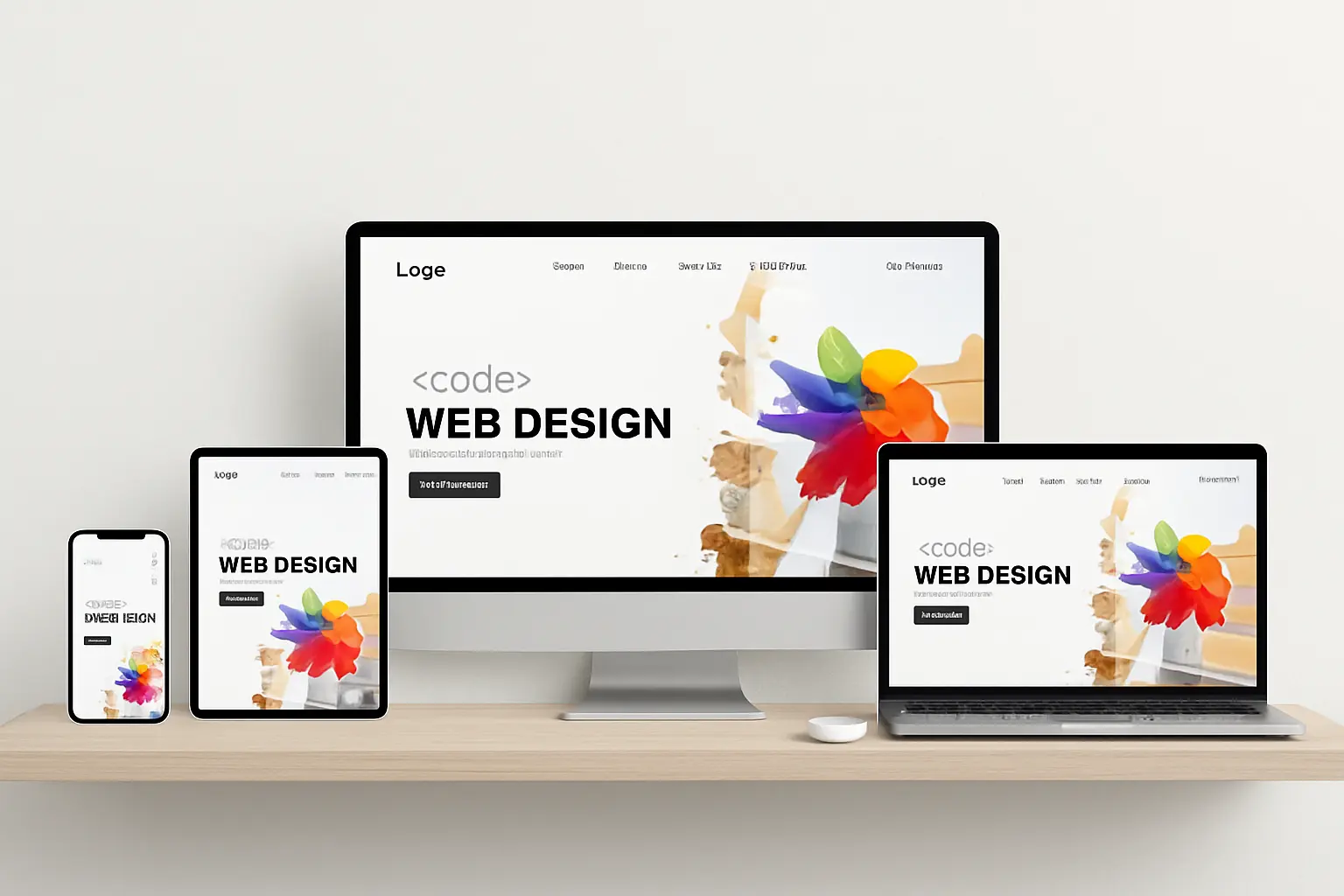Website design is more than just how a site looks, it’s how it works for the people who use it. A well-designed website enhances user experience (UX), builds trust, and influences how users interact with your brand. In this article, we explore how various design elements directly affect UX and why thoughtful design is crucial for online success.
What Is User Experience (UX) in Web Design?
User experience (UX) in web design refers to how visitors feel when interacting with your website. It’s the overall impression a user has, shaped by the design’s usability, functionality, and emotional impact. Good UX focuses on creating seamless, intuitive, and enjoyable experiences that guide users naturally toward their goals.
Emotional design plays a key role here. Visual appeal, cognitive load, and the ease of navigation all contribute to how a user perceives your website. If users find your site difficult to understand or cluttered, their engagement drops and bounce rates increase. But if your site feels effortless to use, people are more likely to stay, explore, and convert.
The Core Elements of Website Design That Influence UX
Visual Appeal & Aesthetic Design
First impressions happen fast often within milliseconds. Aesthetically pleasing websites create an immediate sense of professionalism and trust. Visual appeal includes layout, imagery, balance, and harmony between design elements. Good aesthetic design reduces cognitive load and makes your site feel credible and easy to use.
Typography & Color Schemes
Typography and color schemes might seem like surface-level choices, but they have a significant impact on UX. Readable, consistent fonts improve clarity and flow. Color choices evoke emotion, signal hierarchy, and guide user behavior. Contrasting colors help highlight call-to-action (CTA) buttons and ensure accessibility.
Content Hierarchy & Information Architecture
Users scan websites before reading in-depth. That’s why content hierarchy and information architecture are critical. Proper headings, subheadings, and logical grouping of information make it easy for users to find what they’re looking for. Well-structured content reduces frustration and leads to a smoother, more intuitive browsing experience.
Navigation & Usability
Navigation should be intuitive. Visitors shouldn’t have to think twice about where to go next. Whether it’s a simple menu, breadcrumb trail, or internal linking structure, users must be able to move through your website effortlessly. Effective wireframing and prototyping during the design process help lay out clear navigation paths.
Usability is the backbone of user satisfaction. When users encounter broken links, inconsistent button behavior, or poor mobile design, their confidence in your site drops. High usability increases engagement and helps ensure a pleasant journey across all touchpoints.
Mobile Responsiveness & Responsive Design
More users browse on smartphones and tablets than ever before. If your website isn’t mobile responsive, you’re likely losing visitors and potential customers. Responsive design adapts your layout and content for different screen sizes, ensuring the site remains functional and visually appealing on any device.
Mobile responsiveness also plays a key role in SEO performance. Google uses mobile-first indexing, meaning your mobile version is considered the primary version for ranking. A responsive site improves both UX and your visibility in search results.
Page Load Speed & Performance
Speed matters. Users expect pages to load within two seconds or less. Anything longer increases bounce rates significantly. Slow websites frustrate users, reduce trust, and hurt conversions. To enhance page load speed, optimize images, streamline code, and choose fast, reliable hosting.
Fast-loading sites improve user experience by reducing friction. Visitors can navigate, consume content, and complete actions without interruption, which boosts satisfaction and increases conversion rates.
Accessibility and Inclusive Design
Web accessibility ensures your site can be used by everyone, including people with disabilities. Features like proper alt text, keyboard navigation, sufficient color contrast, and screen reader compatibility are all vital. Accessibility is not just a legal requirement; it’s a UX imperative.
Inclusive design helps more users engage with your content, lowering bounce rates and increasing reach. It also reflects positively on your brand, showing you value every visitor.
Trust, Credibility & First Impressions
Users decide within seconds whether they trust a website. Design cues like professional layouts, consistent branding, secure connections (HTTPS), and clear contact information contribute to trust and credibility.
If a site appears outdated, cluttered, or difficult to navigate, users may question the legitimacy of the business. A clean, modern design signals that you’re professional, reliable, and worth doing business with.
Conversion Rates & Call-to-Action (CTA) Optimization
Effective website design guides users toward specific actions subscribing, buying, contacting you, or signing up. Strategic CTA placement, contrasting colors, and compelling copy can significantly improve conversion rates.
CTAs should be visible, actionable, and contextually placed. Design elements like whitespace, icons, and animations can draw attention to them without being intrusive. Optimizing CTA buttons turns passive visitors into active participants.
SEO Performance and UX Synergy
UX and SEO are deeply interconnected. A well-designed site that loads fast, is easy to navigate, and keeps users engaged will naturally rank better. Google rewards websites that meet user expectations through behavioral signals like low bounce rates, high dwell time, and mobile usability.
Structured information architecture also improves crawlability, allowing search engines to better understand your content. By aligning SEO performance with UX best practices, you create a site that performs well both technically and experientially.
Final Thoughts: Why Website Design Matters for UX
Website design is not just a visual choice, it shapes how users experience, engage with, and trust your business. From visual hierarchy and mobile responsiveness to CTA effectiveness and load speed, every design decision should aim to enhance usability, reduce friction, and serve the user’s goals. If your goal is to build trust, boost engagement, and drive conversions, then investing in smart, user-first design is non-negotiable.



